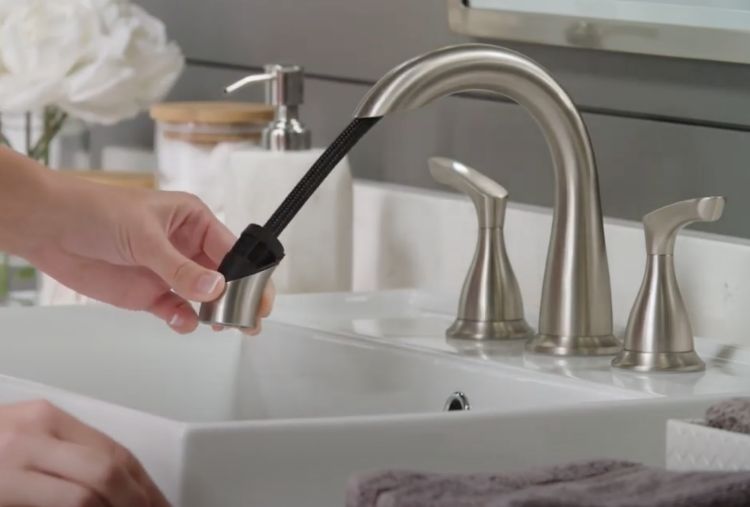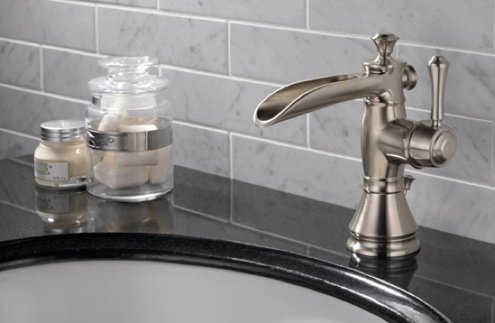What It's Vital to Repair a Malfunctioning Faucet
What It's Vital to Repair a Malfunctioning Faucet
Blog Article
The author is making a number of good annotation relating to Why Are My Faucets Dripping (And Can I Fix It Myself)? in general in this article which follows.

Leaking taps may appear like a minor inconvenience, but their effect exceeds just the aggravation of the sound. From drainage to incurring unnecessary monetary costs and health risks, disregarding a leaking tap can cause various repercussions. In this post, we'll delve into why it's crucial to resolve this usual household problem without delay and successfully.
Waste of Water
Environmental Influence
Leaking faucets contribute significantly to water waste. According to the Environmental Protection Agency (EPA), a solitary tap dripping at one drip per second can squander more than 3,000 gallons of water per year. This not just pressures water sources yet also affects communities and wildlife depending on them.
Financial Prices
Boosted Water Costs
Past the environmental effect, dripping taps can blow up water costs considerably. The built up wastefulness in time equates right into greater utility expenses, which can have been avoided with timely repair services.
Potential Home Damage
Furthermore, extended leaking can lead to damage to components and surface areas bordering the faucet. Water build-up can cause discoloration, rust, and also architectural issues if left neglected, leading to added repair work costs.
Health Worries
Mold And Mildew and Mildew Development
The constant existence of dampness from a dripping faucet creates an optimal environment for mold and mold development. These fungis not just compromise interior air top quality yet additionally pose wellness risks, particularly for people with respiratory system conditions or allergic reactions.
Waterborne Diseases
Stagnant water in trickling faucets can come to be a breeding ground for microorganisms and various other virus, boosting the risk of waterborne illness. Impurities such as Legionella microorganisms prosper in stationary water, potentially bring about major ailments when ingested or inhaled.
DIY vs. Expert Repair
Advantages and disadvantages of Do It Yourself Repair Work
While some might try to deal with a leaking faucet themselves, DIY fixings feature their very own collection of difficulties. Without appropriate expertise and devices, DIY attempts can exacerbate the concern or cause incomplete repair services, prolonging the problem.
Advantages of Hiring a Professional Plumber
Employing a specialist plumber makes sure that the underlying cause of the dripping tap is resolved effectively. Plumbing technicians possess the expertise and equipment to identify and fix faucet concerns efficiently, conserving time and lessening the threat of further damages.
Step-by-Step Overview to Fixing a Dripping Tap
Devices Required
Prior to trying to repair a dripping tap, collect the needed tools, consisting of a flexible wrench, screwdrivers, substitute parts (such as washers or cartridges), and plumber's tape.
Typical Faucet Issues and Their Solutions
Identify the kind of tap and the specific concern triggering the drip. Typical problems include damaged washing machines, rusty shutoff seats, or faulty O-rings. Refer to manufacturer instructions or online tutorials for step-by-step assistance on fixings.
Safety nets
Routine Maintenance Tips
To avoid dripping taps, do regular upkeep such as cleaning aerators, examining for leakages, and replacing damaged components quickly. Additionally, consider installing water-saving devices or updating to a lot more effective fixtures.
Importance of Prompt Fixes
Addressing leaking taps as quickly as they're discovered avoids additional water wastage and prospective damages, eventually saving both water and money in the long run.
Effect On Residential Or Commercial Property Value
Assumption of Well-Maintained Residential Property
Keeping a home in good condition, consisting of addressing upkeep problems like trickling faucets, boosts its regarded worth and desirability amongst prospective customers or occupants.
Influence on Resale Worth
Characteristics with properly maintained plumbing components, consisting of taps, command greater resale worths in the real estate market. Addressing dripping faucets can add to a favorable impression throughout home inspections and settlements.
Ecological Duty
Specific Contribution to Conservation
Taking duty for repairing trickling faucets straightens with wider initiatives toward water preservation and environmental sustainability. Every person's actions jointly make a considerable influence on protecting priceless sources.
Lasting Living Practices
By focusing on punctual repair work and embracing water-saving behaviors, people add to lasting living techniques that profit both present and future generations.
Final thought
Resolving a leaking tap goes beyond mere benefit; it's an essential step towards saving water, lowering monetary prices, and safeguarding health and wellness and property. Whether with DIY fixings or expert aid, doing something about it to repair trickling faucets is a little yet impactful way to advertise accountable stewardship of sources and contribute to a much healthier, a lot more lasting future.
How to Fix a Leaky Faucet: Step-by-Step Repair Guide
A leaky faucet may seem like a simple annoyance, but if it's not fixed promptly, that leak could cost hundreds to potentially thousands. From water damage to mold, mildew, and high water bills, even a tiny leak can be catastrophic if left unattended. Damage like this can even affect the overall value of your home, so it's important to take the right approach for leaky faucet repair. You may need the help of a plumber in some cases, but we've got a few tips you can try on how to fix a leaky faucet before calling the pros.
Four Faucet Types
When you're learning how to fix a leaky faucet, the first step is knowing what kind of faucet you're working with! There are four common types.
Cartridge Faucets
Cartridge faucets come in one- or two-handled varieties. In one-handled cartridge faucets, hot and cold water combines in a single cartridge. In the two-handled versions, hot and cold water are controlled separately and mixed in the faucet.
Ball Faucets
Ball faucets have a single lever you push up and down to adjust the pressure and rotate to change the temperature. A slotted metal ball controls the amount of water allowed into the spout.
Compression Washer Faucets
They're the oldest type of faucet, but they're still used in many homes — especially older ones. Compression faucets have two separate handles that, when turned, raise or lower the washer that seals a water valve. This valve stops water from flowing through the faucet when it is turned off.
Disc Faucets
Disc faucets rarely need to be repaired due to their maintenance-free design. The water flow is controlled by two discs — the upper one raises and lowers against a fixed lower disc, creating a watertight seal. If your disc faucet starts leaking, you may need to replace the seals or clean residue buildup from the inlets.
Fixing a Leaky Faucet
Step 1: Turn Off the Water
Whether you're learning how to fix a leaky bathtub faucet or how to fix a leaky kitchen faucet, always turn off the water supply to your working area when you're fixing a leak. The last thing you want is a flood added to your list of things to fix.
Look for the shutoff valves below your sink or around the tub and turn them clockwise to stop the water flow. If your faucet doesn't have shutoff valves, you may need to turn off the water for the whole house. Check to make sure it's off by turning the faucet on. If nothing comes out, you're ready to start the repair.
Step 2: Take Apart the Faucet
How you disassemble your faucet depends on the type of fixture you have. You can use a flathead screwdriver to remove the caps on top of the handle or handles for cartridge and compression faucets. Inside, you should see handle screws. Unscrew these with a screwdriver to remove the handle.
Disc- and ball-style faucets will typically have an inlet screw near the handle, and removing that will reveal the interior of the faucet.
Detach the Valve Stem
For cartridge- and compression-style faucets, you'll see the inner valve stem or cartridge once you remove the faucet handles. If you have a compression faucet, unscrew the brass valve stem. If you have a cartridge faucet, pull out the cartridge. If your cartridge has been in place for a while, it may require some tools or extra force to remove it due to mineral deposits.
Examine and Replace Parts
Once you've removed the parts, check them out to confirm what needs to be replaced. You may see corroded rubber washers, O-rings, stems, or cartridges. On a ball-style faucet, check the seats and springs for damage.
If you need to repair a leaky disc faucet, check the inlet and seals on the lower disc.
Once you determine what parts must be replaced, visit your local hardware store. Bring the damaged parts with you to ensure you can purchase the correct components to replace them.
Clean Valves and Faucet Cavity
If you've removed a stem or cartridge, you may notice mineral buildup in the faucet's threads. Use white vinegar to clean the valve seat by soaking it for a few minutes, then scrub it away with a soft toothbrush and rinse with warm water. You can also clean the interior of the faucet in the same way.
Reassemble the Faucet
Once your faucet is cleaned and the required parts have been replaced, it's time to reassemble it. Put the pieces back together and slowly turn the water supply back on. Doing this slowly is crucial because too much initial water pressure can damage the new hardware you've just installed.
https://homewarranty.firstam.com/blog/how-to-fix-leaky-faucet

I was introduced to that write-up about Why Are My Faucets Dripping (And Can I Fix It Myself)? through an acquaintance on another blog. Are you aware of anybody else who is occupied with the subject? Take a moment to promote it. Many thanks for taking the time to read it.
Report this page